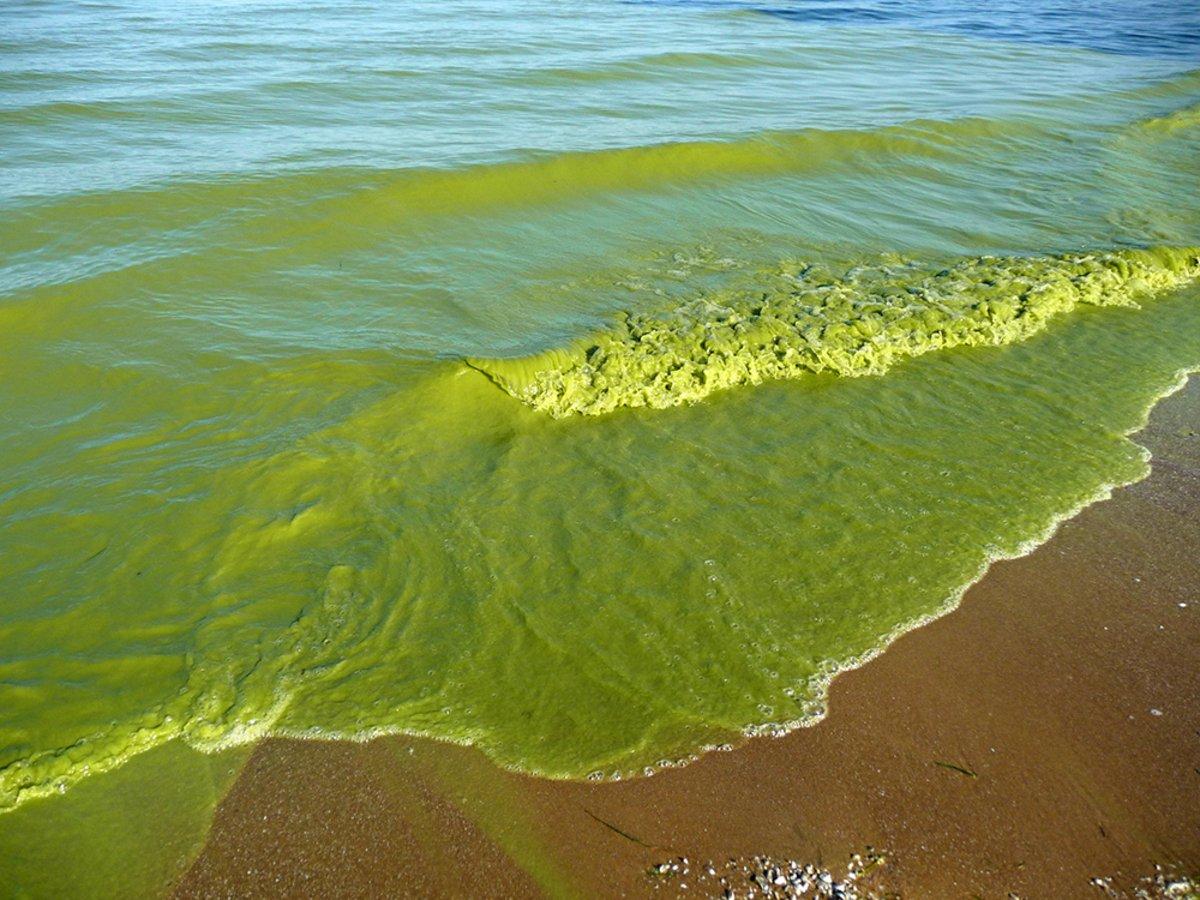Google Scholar Aqualog HAB Publication Links
Click below to view the Aqualog HAB publications from the scientific community.
Southeast Lake Erie shore of Pelee Island, Ontario, Canada, 5 miles north of the international line (September, 2009). Photo Credit: Tom Archer
Harmful algal blooms, or HABs, occur when there is too much growth of algae in water. Some (cyanobacteria, also referred to as blue-green algae) produce toxins that are dangerous for animal and human health, as well as a financial impact for drinking water treatment plants. (Reference: )
These blooms are a particular issue in the Great Lakes region of the United States in the late summer months. Several species of cyanobacteria can produce a variety of toxins including hepatotoxins and neurotoxins. In addition, some species can produce so-called taste and odor compounds that, though not toxic, can lead to drinking water customer complaints, and thus represent a considerable treatment objective.
Environmental water researchers use the ��������ֱ�� Aqualog to monitor fluorescence signatures of organic matter derived from HABs which can be an indicator of upcoming blooms. Click here to go to the Aqualog - Environmental Water Research Analyzer product page.
Automated Organic Analysis & Early Warning Sentinel
The Gold Standard for Water CDOM Research
Do you have any questions or requests? Use this form to contact our specialists.
